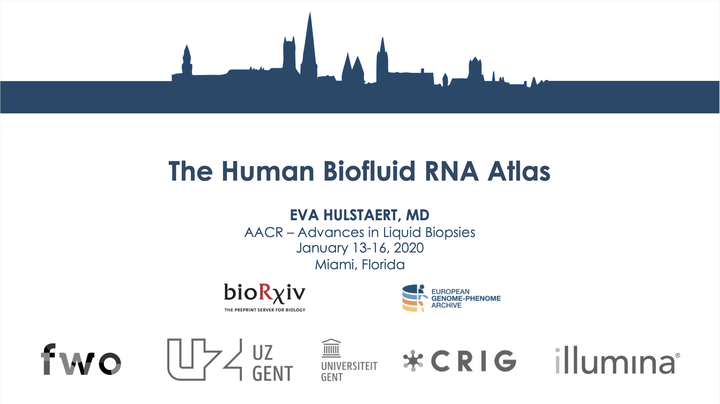The Human Biofluid RNA Atlas

Abstract
Liquid biopsies offer a minimally-invasive alternative to tissue biopsies for both diagnosis and monitoring of treatment response. Extracellular RNAs present in biofluids have emerged as potential biomarkers in health and disease, including cancer. While current studies typically focus on plasma or serum, other biofluids may contain more informative RNA molecules for particular disease types. Here, we present an unprecedented atlas of messenger, circular and small RNA transcriptomes of a comprehensive collection of 20 different human biofluids (amniotic fluid, aqueous humor, ascites, bile, bronchial lavage fluid, breast milk, cerebrospinal fluid, colostrum, gastric fluid, pancreatic cyst fluid, plasma, saliva, seminal fluid, serum, sputum, stool, synovial fluid, sweat, tear fluid and urine). By means of 173 synthetic RNA spike-in controls, we compared RNA content across biofluids, revealing a more than 10 000-fold difference in RNA concentration. Of interest, the circular RNA fraction is significantly increased in nearly all biofluids compared to various solid tissues. Each biofluid transcriptome is enriched for RNA molecules derived from specific tissues and cell types. In addition, a subset of biofluids, including stool, sweat, saliva and sputum, contain high levels of bacterial RNAs. These findings enable a more informed selection of the most relevant biofluid to monitor individual cancer types. To verify the biomarker potential in these biofluids, four validation cohorts representing a broad spectrum of diseases, including urine from bladder cancer patients and CSF from glioblastoma patients, were profiled, revealing differential RNAs between case and control subjects. Taken together, our results reveal novel insights in the RNA content of human biofluids and may serve as a valuable resource for future biomarker studies.